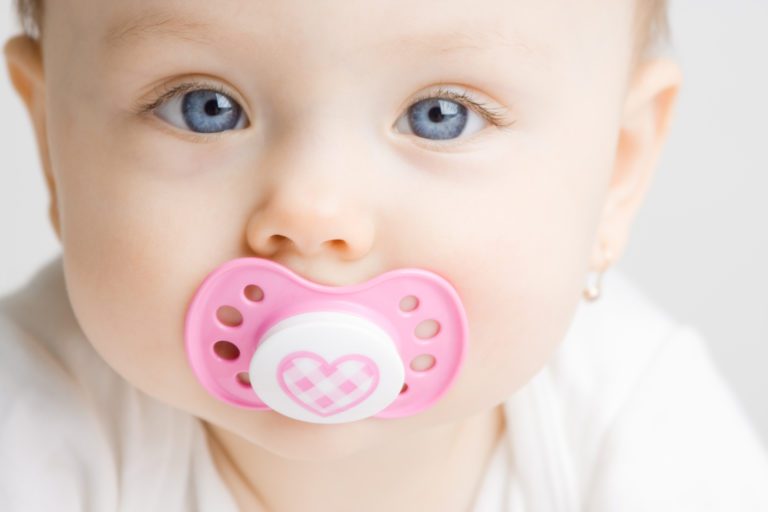Face it, babies suck. They love to suck! For babies, sucking is a natural (and strong!) instinct that helps ensure they’re ready to eat soon after birth. That’s why pacifiers are recommended from birth.
Sucking is a Natural Reflex
Baby’s desire is to suck early on in pregnancy. Ultrasounds will sometimes show a fetus sucking on their fingers or a toe. This is because sucking calms babies. And babies don’t just suck when they’re hungry— they suck anytime they want to relax. Sucking without wanting to eat is called “non-nutritive” sucking; this is baby’s natural way to calm themselves or simply relax a bit. You may notice your baby moving their lips in the sucking reflex as they’re dozing off. For baby, sucking on a pacifier is like adults relaxing with soothing music, chewing gum, reading a good book, or taking a warm bath—things we do to slow down and unwind before sleep.
Benefits of Pacifier Use
While calming, using a pacifier when baby is drifting off to sleep has been shown to reduce baby’s risks of Sudden Infant Death Syndrome (SIDS). This is why the American Academy of Pediatrics recommends that parents place baby to sleep with a pacifier.
Because pacifiers are recommended by the American Academy of Pediatrics (AAP) and other baby experts, they are generally considered safe for baby. Clean your baby’s pacifier each time before they use it and look for nicks, cuts, or wear that means it’s time to replace that beloved binkie.
You may have heard that using pacifiers can cause dental issues, speech problems, or ear infections— those are generally unfounded and not proven in research. Both the AAP and American Dental Association (ADA) recommend stopping pacifier use between the ages of 2 and 4 years old if your toddler hasn’t stopped on their own by then.
While you can give your baby a pacifier from birth, the AAP recommends offering a pacifier when breastfeeding is well established, typically by 3-4 weeks of life. The idea that pacifiers could affect breastfeeding is not well supported by research.
Some parents prefer to let their little one suck on their fingers. However, if your child needs help breaking the sucking habit (not all do), a pacifier may be easier to stop than finger sucking, since pacifiers can “magically” begin to disappear when fingers obviously cannot!
Healthfully Use a Pacifier
- Offer a pacifier at bedtime and for naps, but don’t force it if your baby isn’t interested
- Once baby falls asleep and the pacifier falls out, you do not need to replace it
- Don’t use any clips or ties to keep the pacifier from falling to the floor – these can be dangerous
- There is not one pacifier shape that is better than others – experiment and see what your baby prefers
- Keep a good supply! They tend to disappear or end up on the floor just when you need one the most
- Wash pacifier(s) frequently to keep them clean: For the first 6 month, boil them or put them through the dishwasher. After that, soap and water are adequate
- Pacifiers wear out: Examine them often to make sure they are not beginning to fall apart or are sticky
- Children often stop using a pacifier (or finger sucking) all on their own. For those that need a little help, wean them off slowly. Use praise and rewards when they don’t use them, and offer support and reminders throughout the day and night when they “need” one
YOU MAY ALSO LIKE: Infant Massage for Babies in the NICU






Comments are closed.